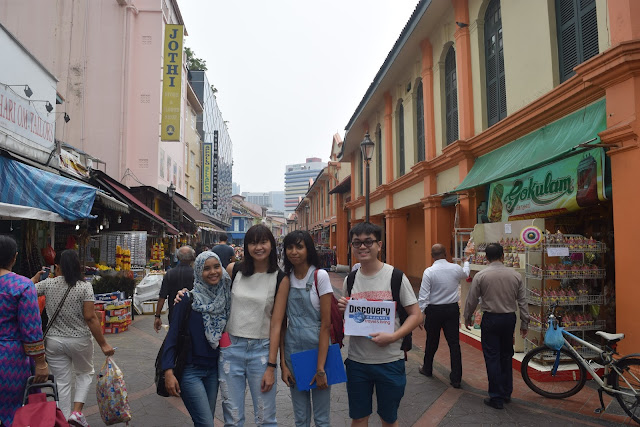Campbell
lane was named after Sir Colin Campbell (1792-1863) who was born in Scotland and
rose to become a field marshal. He was involved in victorious campaigns in
China such as the second Sikh War, the Crimean War, dealt with the 'null
Mutiny' among East India Company troops, and organised the army sent east in
the Second Opium War.
There are however
also accounts stating that Campbell Lane was named after Robert Campbell,
managing partner of Martin Dyce and Company in the 1870s. As we walked along Campell Lane, we saw many
shophouses selling flower garlands. Campbell lane truly depicts the Indian culture and traditions through the numerous
amenities housed here. One can easily find a wide assortment of shops; stores and stalls
selling an array of items. Flowers, specially carved wooden furniture and other
wood made products; one can find all of these around. Garland makers sitting
with their colourful collections of garlands are a refreshing sight to watch for
all. Indian women purchasing garlands of fresh flowers are a common sight here
at the Campbell Lane.
What is the significance of the flower garlands?
Flower garlands are worn or given to show high respect to an individual or deity. The garlands symbolise prosperity and Hindu devotees buy them to offer their gods as a sign of respect. It is placed on statues of deities as prayer offerings, they’re also used to garland important guests during official functions, as a symbol of respect. Indian women often thread pretty flowers into their hair as a form of adornment during weddings.
What is the significance of the flower garlands?
Flower garlands are worn or given to show high respect to an individual or deity. The garlands symbolise prosperity and Hindu devotees buy them to offer their gods as a sign of respect. It is placed on statues of deities as prayer offerings, they’re also used to garland important guests during official functions, as a symbol of respect. Indian women often thread pretty flowers into their hair as a form of adornment during weddings.
Can you find the information board of "The Shop of P Govindasamy Pillai?" What does it tell about the man?
P Govindasamy Pillai was a poor immigrant who came to Singapore
almost penniless. His rags to riches story began after he arrived in Singapore
with only 13 Rupees. He epitomised the Singapore dream by transforming his life
around on the basis of determination and
hard work. With the help of a bank loan, he embarked on a new retail career.
His business included quality textiles and sarees and with strong determination,
he became very successful. He eventually became the King of Textile industry. The
taste of success did not stop him from reciprocating back to society. He has
also helped in many worthy causes such as Sri Perumal Temple, Mount Alvernia
Hosptial, the establishment of the University of Malaya and the Ghandi memorial
fund. He was also remembered as a social reformer, , king of the textile
industry, a philanthropist and a local legend. A very humbling value that he had
was that he reciprocated the kindness given to him when he was down under.
References:




No comments:
Post a Comment